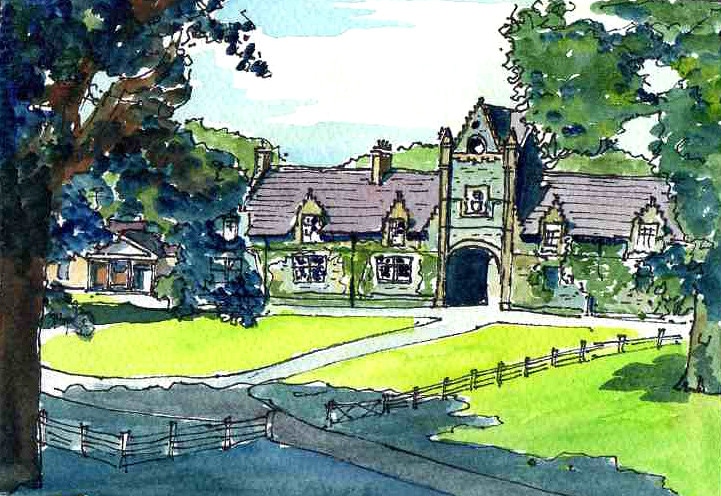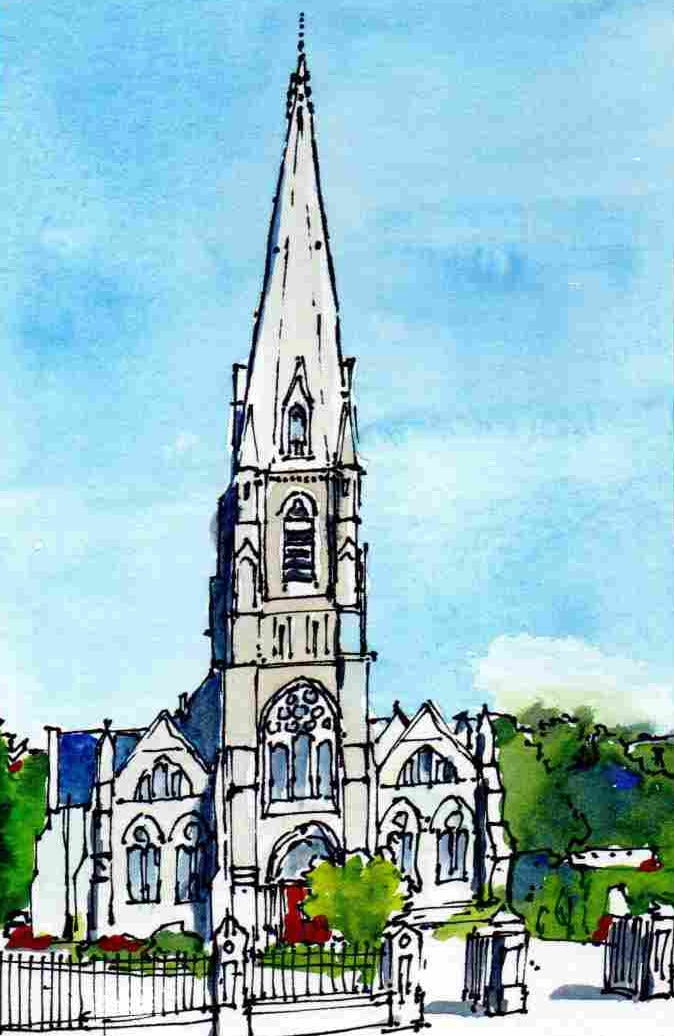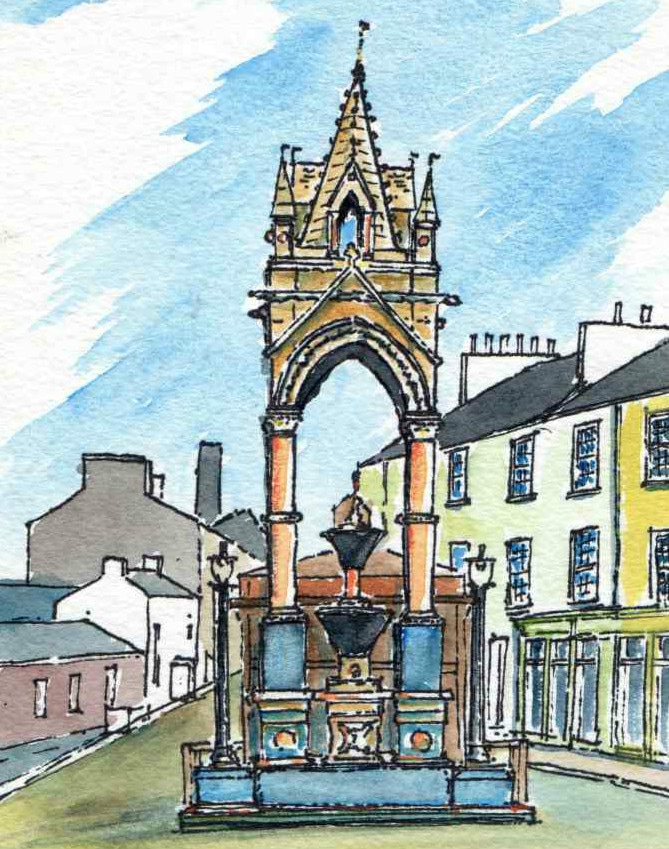Late Nineteenth Century
|
Given the strong links between Ulster and Scotland, it is perhaps not surprising that the Scottish Baronial style became popular towards the end of the century when Home Rule was a topic of debate. As a defensive style it was popular for insurance offices (Belfast), Police Stations (Dungannon) as well as houses. Joseph Bell of Belfast was employed to extend and remodel the stables of Baronscourt in the style in 1890. The building was designed to be seen as a romantic outline from the main house.
The Church of the Immaculate Conception, (1890-95) in Strabane reflects the increasing confidence of the Roman Catholic community towards the end of the nineteenth century, and like many such churches, the influence of funds sent from America. This building is by William Hague and uses details taken from French churches of the 13th century. In form such buildings are often referred to as ‘High Victorian’ because of their profusion of detail. Another example of this style was the Humprey Memorial Fountain which stood at the centre of Abercorn Square in the town until 1931. Inspired by the Albert Memorial in London (1872) such elaborate gothic structures were constructed in a number of towns at the time. This one commemorated Major John Humphreys, agent to the Marquis of Abercorn. He was also the father of the famous hymn-writer Cecil Francis Alexander (All things Bright and Beautiful). |
|




